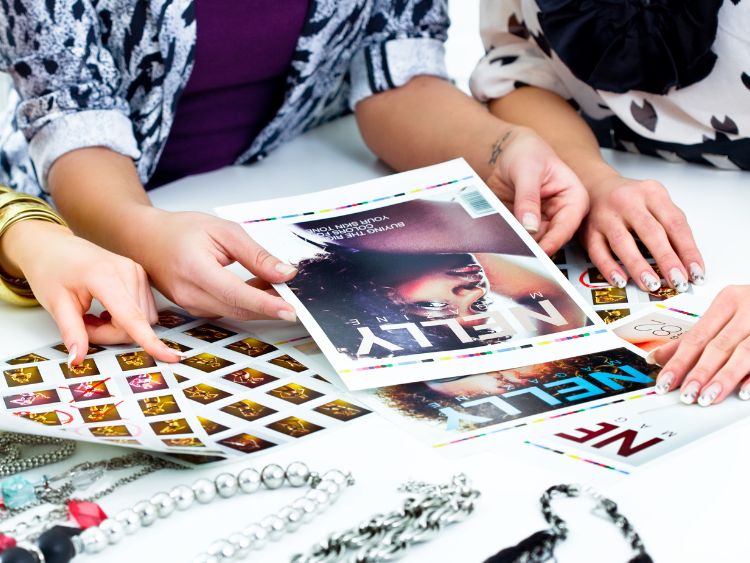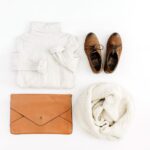Queen of Fashion: A Deep Dive into the Book That Redefined Style
Fashion isn’t just about clothing; it’s a reflection of culture, identity, and power. No book exemplifies this more than Queen of Fashion: What Marie Antoinette Wore to the Revolution by Caroline Weber. This book isn’t just a historical account; it’s a vivid narrative that explores how one woman’s wardrobe influenced not just her era but the entire course of history. From her towering hairstyles to her extravagant gowns, Marie Antoinette’s fashion choices were both a declaration of independence and a catalyst for revolution.
In this article, we’ll delve into the key themes of Queen of Fashion, examining how Weber paints a picture of a queen who used fashion as a tool for both political maneuvering and personal expression. Whether you’re a history buff, a fashion enthusiast, or simply someone intrigued by the power dynamics of the past, this book offers a compelling glimpse into how clothing can shape and even shake the world.
The Intersection of Fashion and Power
Marie Antoinette, the last Queen of France before the French Revolution, was a figure of fascination and controversy. Her fashion choices were often seen as frivolous or even scandalous, but Caroline Weber reveals a more complex narrative. In Queen of Fashion, Weber argues that Marie Antoinette’s wardrobe was a form of political expression. At a time when women were expected to be demure and modest, Marie Antoinette’s bold fashion statements were a way for her to assert her independence and control over her image.
- Haute Couture as Political Armor: Marie Antoinette’s love for fashion was not just about vanity. She used her attire to navigate the treacherous waters of court politics. By adopting styles that were both innovative and extravagant, she distinguished herself from other women at court and asserted her position as queen.
- Revolutionary Styles: As the French Revolution loomed, Marie Antoinette’s fashion choices became even more significant. Her wardrobe was a symbol of the monarchy’s excesses, but it also reflected the changing times. The queen’s shift from elaborate gowns to simpler, more “democratic” attire mirrored the political and social upheavals of the era.
A Closer Look at Key Fashion Statements
Let’s take a moment to explore some of the most iconic fashion statements detailed in the book. These aren’t just outfits; they’re powerful symbols that tell a story of rebellion, resilience, and reinvention.
- The Pouf Hairstyle: Perhaps one of the most recognizable symbols of Marie Antoinette’s reign, the pouf hairstyle was more than just a trend. It was a towering declaration of the queen’s daring personality. Weber describes how the pouf, often adorned with feathers, flowers, and even miniature ships, became a canvas for expressing the queen’s moods and political statements.
- The Chemise à la Reine: This simple white muslin dress, which Marie Antoinette popularized, was revolutionary in its own right. It broke away from the stiff, structured gowns of the time and introduced a new, more natural silhouette. The dress was controversial for its informality but also signaled a shift towards a more relaxed and personal style.
- The Red Heels: In a time when color in footwear was reserved for royalty, Marie Antoinette’s red heels were a bold statement of her status. Weber highlights how these shoes became a symbol of the queen’s desire to stand out and assert her dominance in the court.
The Controversy of Excess
Marie Antoinette’s fashion choices were not without their detractors. In fact, her extravagant wardrobe was one of the many factors that fueled the public’s anger towards the monarchy. Queen of Fashion delves into how the queen’s love for luxury became a symbol of the monarchy’s disconnect from the struggles of the common people.
- The Necklace Scandal: One of the most infamous episodes in Marie Antoinette’s life was the Diamond Necklace Affair. Although she was not directly involved, the scandal further tarnished her reputation. The public’s perception of her as a spendthrift queen who was out of touch with reality was solidified, and her fashion choices were often used as evidence of her alleged extravagance.
- Propaganda and Public Perception: Weber discusses how Marie Antoinette’s image was manipulated by political propagandists. Her fashion choices, once admired and emulated, were now portrayed as symbols of the monarchy’s excess and corruption. Pamphlets and cartoons depicted the queen as a vain and selfish woman, more concerned with her appearance than the welfare of her subjects.
The Legacy of Marie Antoinette’s Fashion
Marie Antoinette’s influence on fashion didn’t end with her execution; it has echoed through the centuries, inspiring designers, artists, and cultural movements. Weber’s Queen of Fashion examines how the queen’s style has been reinterpreted and reimagined over the years.
- Inspiration for Modern Designers: Designers like Vivienne Westwood and John Galliano have cited Marie Antoinette as an inspiration for their work. Her bold use of color, texture, and form continues to influence the world of haute couture.
- Pop Culture Icon: Marie Antoinette’s image has been immortalized in films, books, and art. From Sofia Coppola’s 2006 film to modern fashion editorials, the queen’s style remains a symbol of luxury, excess, and the ultimate price of fame.
FAQs about Queen of Fashion: What Marie Antoinette Wore to the Revolution
What is Queen of Fashion about?
Queen of Fashion by Caroline Weber is a historical analysis of Marie Antoinette’s life through the lens of her fashion choices. It explores how the queen used clothing to navigate the political and social challenges of her time.
How does Caroline Weber depict Marie Antoinette in the book?
Weber portrays Marie Antoinette as a complex figure who used fashion as a means of political expression. Rather than being a mere trendsetter, she was a woman who understood the power of image and used it to assert her authority and independence.
Why is Marie Antoinette’s fashion significant?
Marie Antoinette’s fashion choices were significant because they were more than just personal preferences; they were statements of power, defiance, and identity. Her style reflected the tensions and changes of her time and played a role in shaping public perceptions of the monarchy.
What are some of the key fashion pieces discussed in the book?
The book discusses several key fashion pieces, including the pouf hairstyle, the Chemise à la Reine, and her iconic red heels. Each of these elements is explored in the context of their political and social significance.
Can I learn about the French Revolution through this book?
Yes, Queen of Fashion provides a unique perspective on the French Revolution by examining it through the lens of Marie Antoinette’s fashion. While it’s not a traditional history book, it offers valuable insights into the cultural and political dynamics of the time.
Conclusion
Queen of Fashion: What Marie Antoinette Wore to the Revolution is more than just a book about clothes; it’s a profound exploration of how fashion intersects with history, politics, and identity. Caroline Weber’s meticulous research and engaging narrative make this a must-read for anyone interested in the complexities of power and the role of personal style in shaping the world.
Whether you’re looking to understand the historical significance of Marie Antoinette’s wardrobe or seeking inspiration for your own fashion choices, this book offers a wealth of insights. It reminds us that fashion is not just about what we wear, but about how we choose to present ourselves to the world—and, sometimes, how that presentation can change the course of history.
Authoritative Links
- www.example.com/marie-antoinette-fashion-history
- www.example.com/french-revolution-marie-antoinette
- www.example.com/impact-of-fashion-on-history
- www.example.com/marie-antoinette-cultural-legacy
- www.example.com/haute-couture-and-politics
This article captures the essence of Caroline Weber’s Queen of Fashion, weaving historical analysis with cultural insights to create a comprehensive and engaging piece that resonates with readers.







